8 Amazing Ski Resorts in Japan for Your Next Winter Getaway
Chasing powder? Check out these spots for your snowy getaway in Japan.
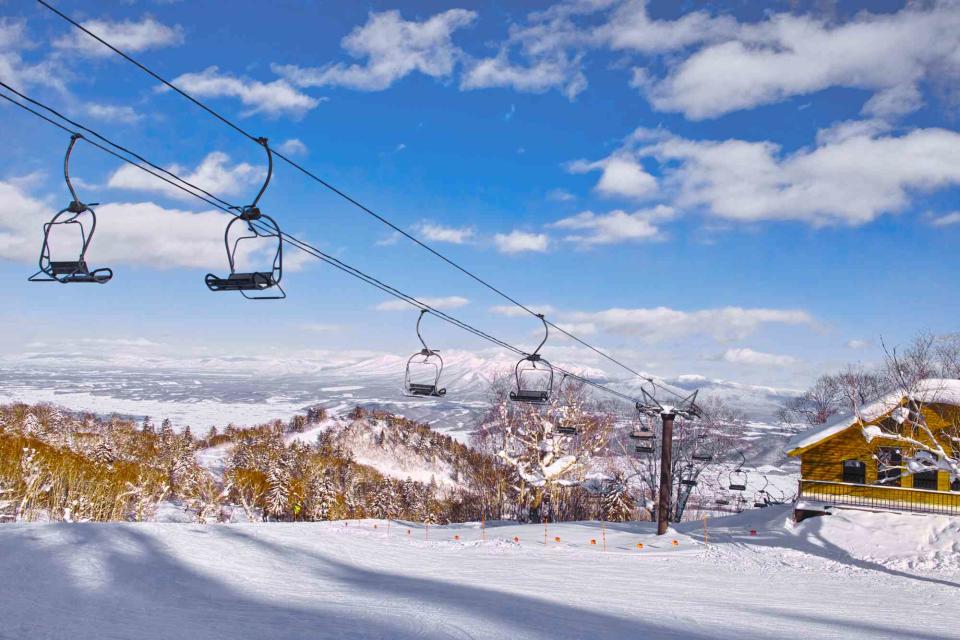
7maru/Getty Images
Fluffy powder, hot springs, and cold sake — if that sounds like a good day on the mountain, then Japan is a perfect ski destination for you. The country is ridged with volcanic mountain ranges, and its latitude and weather patterns mean it's blessed with plenty of fine, dry powder — and the ski resorts to go with it.
The season runs from December to April or possibly beyond, depending on the location. Along with great food, natural hot springs, and cultural diversions, the country should be on your radar for your next winter getaway.
Niseko
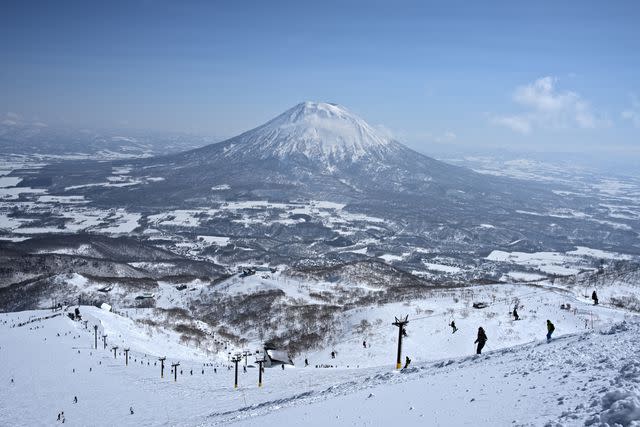
monji/Getty Images
Niseko is probably Japan’s most popular ski destination for international visitors, with lots of multilingual support and plenty of creature comforts. About 2.5 hours south of Hokkaido’s capital, Sapporo, and its airport, the Niseko ski area is comprised of four interconnected resorts known collectively as Niseko United.
“I believe we have the best powder in the world,” says Kohei Iwata, rooms division manager at the Higashiyama Niseko Village, a Ritz-Carlton Reserve. “It’s rare to see sunshine in the wintertime, but that means we have really good snow conditions.” The 31 lifts and 73 runs are roughly equally divided between beginner, intermediate, and advanced courses. Iwata, a snowboarder, likes an ungroomed run called Superstition. He says that for the adventurous, the whole backside of the resort is available for backcountry riders.
Hirafu village is the place to go for dining and nightlife — stop in Bar Gyu+ for a quirky, cozy nightcap.
Tomamu
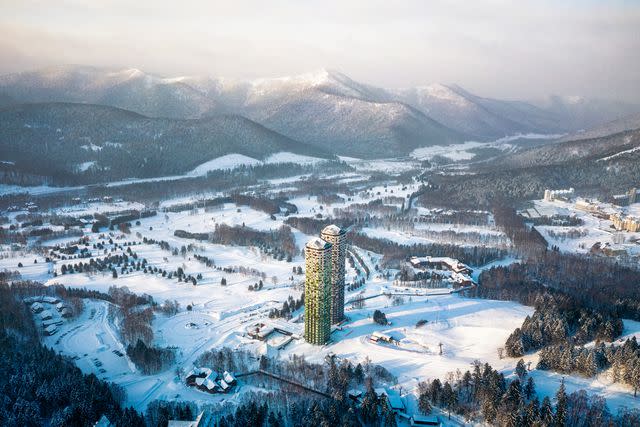
SW Photography/Getty Images
Part of Hokkaido’s "powder belt," Tomamu is smaller than Niseko, but has the benefit of being much less crowded. With 29 runs and six lifts, the courses are evenly divided into three difficulty levels. Tree skiing is especially excellent here, or you can book a snowcat tour to explore neighboring fresh terrain.
Tomamu is family-friendly, with lots of resort activities and amenities, plus not much in the way of nightlife. You’ll find restaurants that are welcoming to kids, bunny slopes, an Ice Village — including an ice chapel you can get married in — a wave pool, and a viewing platform for the frost-covered forest, complete with hot chocolate.
Furano
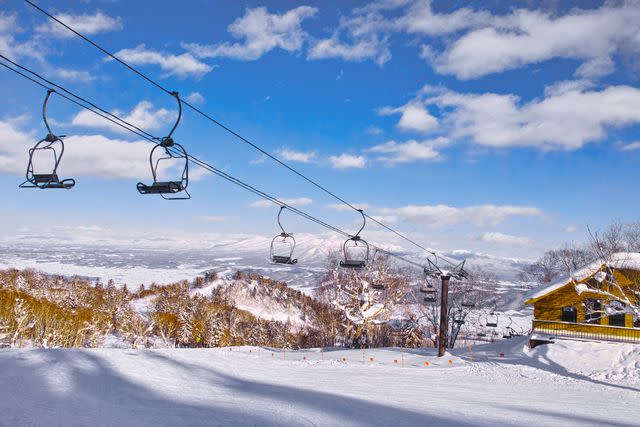
7maru/Getty Images
Located in the geographical center of Hokkaido and only a two-hour bus ride from New Chitose Airport, Furano's resort has nearly 3,280 feet of vertical drop and 15.5 miles of beautiful piste across 28 runs.
The courses are split 40/40/20 across beginner, intermediate, and advanced, with kids under 12 qualifying for free lift tickets and night skiing until 730 p.m. on weekends and holidays. Explorers might use the town as a base for visiting neighboring resorts — book a backcountry tour for some fresh tracks.
Less crowded than Niseko, Furano has friendly locals and a good variety of accommodations and dining options, as well as publicly accessible hot spring baths at many of the main hotels.
Myoko
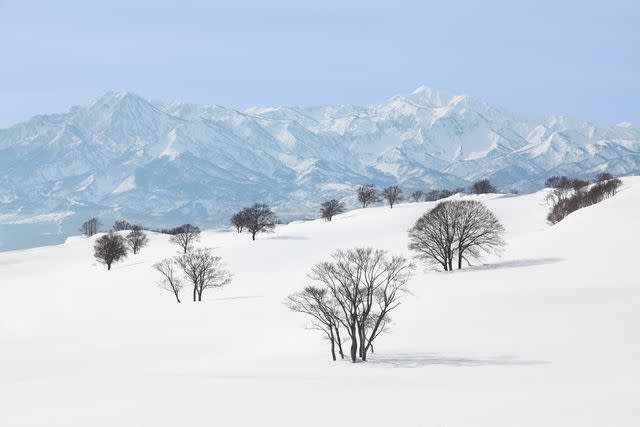
S. Akiyama/Aflo/Getty Images
Snow on Honshu is more copious than in Hokkaido, if not quite as dry. That’s the case in Myoko, which averages around 590 inches of powder per season. The Myoko ski area boasts several adjacent resorts. Myoko yoga instructor and Airbnb host Nanaco says Myoko has a good mix of terrain, where beginners can benefit from ski schools (parents can drop off kids for a lesson and hit the mountain solo) and experts can tackle the backcountry. However, cautions Nanaco, hire a qualified guide for exploration. “A good thing about Myoko is that it’s quiet,” she says. “But quiet means if you’re in trouble, you’re kind of on your own.” She also recommends visiting the family-run Seki Onsen, a small resort that's popular with advanced skiers and riders.
Myoko's charm is that although there's infrastructure for international visitors, it “retains its Japanese-ness,” according to Nanaco, with many locally owned businesses and traditional restaurants.
Hakuba
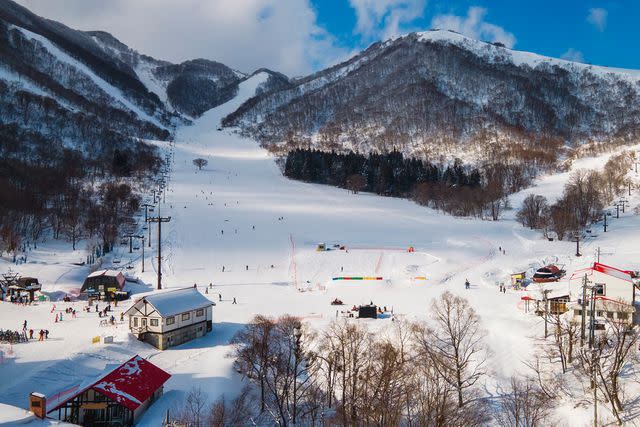
zencreation/Getty Images
The most popular international ski area on Honshu, the Hakuba Valley can be reached in less than three hours by bullet train or bus from Tokyo. The valley includes 10 ski resorts that can be explored on a single common ticket, though many are not interconnected. The most popular include Happo-One, with 22 lifts and eight runs, and the interlinked Hakuba 47 and Goryu, with a combination 17 lifts and 24 courses.
Head to Echoland for its aprés-ski scene, including lively nightlife. Try Sarugaku, an izakaya with sashimi and other small plates, as well as locally made sake.
Nozawa Onsen
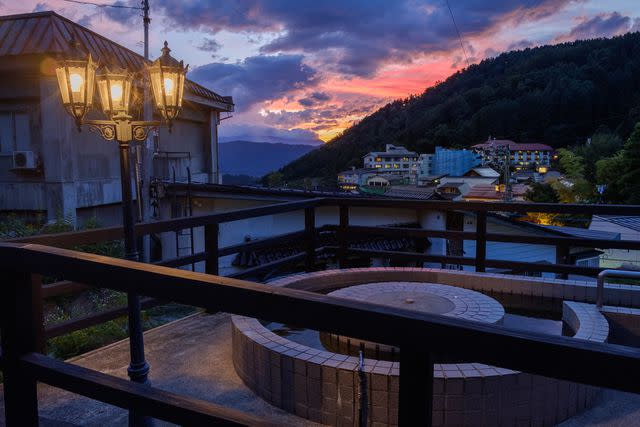
wataru aoki/Getty Images
“This ski resort is perfect if you don't have a car — it's an easy bus ride from Iiyama Station on the Hokuriku Shinkansen line, and the village is small enough that you can walk around,” says Rie Miyoshi (Grant), a multimedia producer at Outdoor Japan.
The snow conditions are stellar, and there's something for every riding level at this over 100-year-old resort. The real draw of Nozawa, however, is its traditional village and community feel, with narrow streets and old-fashioned buildings. “After a day of exercise, you can enjoy a soak in the free soto-yu bathhouses dotted around the village,” says Miyoshi (Grant). And on Jan. 15, the mountain lights up with the Dosojin Fire Festival.
Shiga Kogen
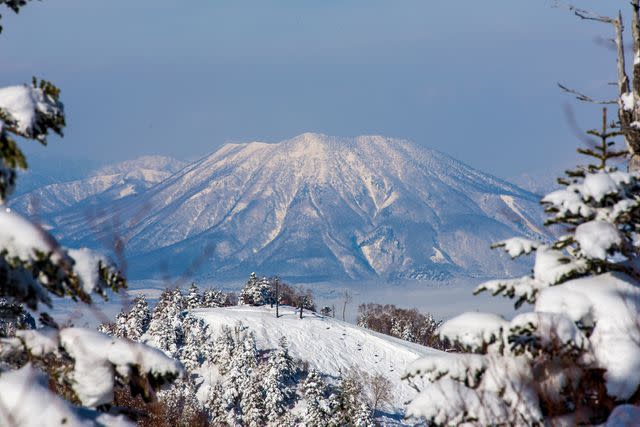
I love Photo and Apple./Getty Images
The second-highest resort in Japan and one of the largest, Shiga Kogen has much to explore, encompassing 18 resorts, 48 lifts, and an elevation ranging from 4,396 to 7,568 feet. Most of the resorts are connected, and all of the lifts can be accessed using a single ticket. The 1998 Nagano Olympics were held here in part, and the resort is popular domestically.
Mid-range hotels with hot springs on site are the norm here, but for a break from the slopes, take a day trip to see the snow monkeys in their own hot spring, or tour the highlands on snowshoes.
Nekoma
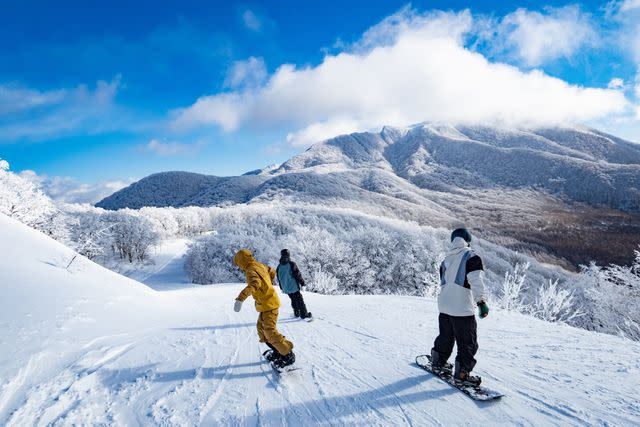
Courtesy of Hoshino Resorts
The newly expanded Nekoma Mountain is an off-the-beaten-track ski resort, especially for international visitors. As of the 2023-2024 season, the resort offers 13 lifts, 33 courses, and two ski areas across three mountains. “The Bandai area has spectacular views of Mount Bandai and Lake Inawashiro, and the Urabandai area offers a unique topography and access to Japan’s high-quality, microfine snow,” says Go Morimoto, managing director of Bandaisan Onsen Hotel and Hoshino Resorts Nekoma Mountain.
Beyond hitting the slopes, Morimoto says, “Foodies will love the Kitakata area 30 minutes from the mountain, the birthplace of Kitakata ramen — one of the three major ramen styles in Japan.”
For more Travel & Leisure news, make sure to sign up for our newsletter!
Read the original article on Travel & Leisure.

